Belief in an Afterlife is Increasing in the United States
Even among the non-religious
This post has been unlocked through a generous grant from the Lilly Endowment for the Association of Religion Data Archives (ARDA). The graphs you see here use data that is publicly available for download and analysis through link(s) provided in the text below.
Long time readers of this newsletter know I write about the three B’s of religion fairly often. Those are religious belonging (which means if you say you are Catholic, Buddhist, atheist, etc.), religious behavior (things like church attendance and prayer frequency), and religious belief (how certain people are of the existence of God). But here’s the thing, there’s a whole bunch of variation in the overall religiosity of an individual if they are just asked a slightly different set of questions.
That’s especially true of religious beliefs. In a prior bit of analysis, I restricted the sample to just adult Americans who said that they never attended religious services and then I looked at how they answered the question about a belief in God. The most popular answer among these low attenders? I believe in God without a doubt (25% chose this one). Meanwhile, only 17% said that God didn’t exist and 16% took an agnostic posture toward God. It’s easy to label someone who never goes to church as non-religious, but when you go one layer deeper you can see that there’s still a whole lot of people with some level of religious belief.
What Does it Mean to be 'Religious'?
This post has been unlocked through a generous grant from the Lilly Endowment for the Association of Religion Data Archives (ARDA). The graphs you see here use data that is publicly available for download and analysis through link(s) provided in the text below.
I wanted to dig a bit deeper on the variations in those belief metrics today, with a question that I haven’t really probed a whole lot. The General Social Survey, which is available on the Association of Religion Data Archives website, contains a really straightforward question, “Do you believe there is a life after death?” And it has an even simpler set of response options - yes or no. It’s been asked with regularity since 1973, so we have nearly five decades of data on this one specific question.
Well, I have to admit that this graph is most certainly not going to go viral on social media. There is no dramatic upward or downward movement of any trend lines. One of the biggest conundrums I had to deal with in creating this visualization was figuring out the proper scale of the y-axis. If I zoomed in too much, it made any movement look really dramatic. So, I compromised a bit and the y-axis runs from 50% to 100%.
But I really don’t need that large of a scale - belief in an afterlife is incredibly robust here and almost completely unchanged over the entire time series. In that first data collection in 1973, about 76% of folks believed in something beyond this life. But by 1990, that figure had crept up to just about 80% and it continued to rise very slowly from there. Really, from 2000 all the way through 2022, the estimates are all basically the same. Even today, the share of Americans who believe in life after death is 82%. When people ask me, “Is the United States a religious country?” This is the stat that I’m going to trot out.
You know I have to dig below the surface of this, though, right? I think education is the first place to check.
Again, this data visualization is not the most dramatic thing I’ve ever produced, but a second glance will point to the fact that what is going on here is pretty profound. It’s not the differences that jump out - it’s the fact that there really aren’t that many differences in belief in an afterlife among the most and least educated in the sample. What’s also pretty stunning is the fact that there’s never really been any huge educational gap on this question. In 1973, education mattered very little - belief in an afterlife ran from 75% to 80% among all four categories I created.
That five point difference is basically there for the entire run of the time series. One line never really deviates that much from the rest of them. I also don’t think it’s really possible to say that having more education makes one more (or less) likely to believe in life after death. In the most recent survey from 2022, 80% of those with no more than a high school education believed in an afterlife. It was 79% of those with a four year degree and 81% of people who had gone beyond a bachelors. In other words - there is no statistically significant impact of education on belief in life after death.
What about age? I constantly have people tell me that people get more religious as they age because it’s a kind of “afterlife insurance.” Which, by the way, is not true. The share of those in the Silent Generation and Baby Boomers who are non-religious has actually increased over the last fifteen years. But maybe when we look specifically at the question of the afterlife, things are a bit different. Let’s check it out by five year birth cohorts.
Okay, let’s do this row by row. The top row are people born between 1940 and 1959 and it looks like the folks who were born in the fifties have clearly experienced an increase in belief as they have aged. For both cohorts, about 70% indicated that there was life after death when they were young, but that’s moved up to 80% for those born in the early 1950s and nearly 90% for those born between 1955 and 1959. For those born in the forties, the lines are much flatter.
I don’t know what to make of the second row, really. A pretty noticeable dip among those born in the 1960s certainly stands out to me, but then the next three cohorts haven’t really reported a consistent trajectory. For each of those groups, belief in life after death is about in the same spot - 83%. How about the younger adults? Again, I don’t really see a clear movement in either direction. What I also want to point out is that people born in the 1980s are just as likely to believe in life after death as people thirty or forty years earlier.
So, it’s pretty much the case that about 20% of all Americans think that there’s nothing beyond this life. But what defines those folks who don’t believe in an afterlife? Maybe it’s all the nones in that camp. Let me check.
Okay, this graph really did strike me as something worth thinking about just a bit. Among the non-religious, they were evenly divided on the question of life after death back in the 1970s. But here’s what intrigued me - as time passed the share of the nones who believed in an afterlife actually rose. By 2000, it was at least 60% and it’s basically stayed at that level in the last two decades. Just think about that for a second - a majority of the non-religious believe that there’s something beyond this life when we die. In other words, the nones actually believe more now than the nones of the 1970s.
I think there’s a good reason for this, by the way. Those non-religious folks in 1973 were much more ‘hard core’ nones. It was difficult to be a secular person in the 1970s - they were less than 5% of the population. You couldn’t be a lukewarm atheist during this time period. But as the nones have grown, you get a lot more people in there who aren’t so committed to the cause of secularism. Recall that the 1990s were when the nones really began to rise quickly. A primary cause being an increase in political polarization. That generated a lot of refugees who felt spiritual, but rejected religion. That’s fascinating to me.
How about we cap this off by trying to predict what factors may lead to someone rejecting the idea of an afterlife? This is a simple logit regression and I threw in a handful of possibly relevant variables. Positive coefficients are factors that lead to a person being more likely to say that there is no afterlife.
I found a total of one variable that was signed in the negative direction and was statistically significant - education. Said simply, controlling for these other factors, an educated person was more likely to believe that there was life after death than someone with less education. That’s pretty counterintuitive, right? I found a couple variables that didn’t matter either way - race and income.
Do You Believe in Miracles?
This post has been unlocked through a generous grant from the Lilly Endowment for the Association of Religion Data Archives (ARDA). The graphs you see here use data that is publicly available for download and analysis through link(s) provided in the text below.
However, there are a handful of causal pathways that emerge here that are worth some reflection. Men were more likely to say there is no afterlife compared to women. Also political liberals are more skeptical of life after death than moderates or conservatives. However, the factor that had the largest magnitude of effect should come as no surprise - it’s people who claimed no religious affiliation. But, I was struck by the fact that even when I included this variable in my model, both being male and being liberal were still statistically significant and positively signed. This indicates that it’s not just religious belonging that perfectly predicts a belief in life after death - it’s other factors at play here, too.
I have written quite a bit about the rise of the nones and the decline of organized religion, but as I say very often - religious belief is incredibly robust in the United States. This is an example of that, certainly. The fact that more Americans believed in the afterlife in 2022 compared to 1973 flies in the face of conventional wisdom. But I’ve also shown in other posts that belief in miracles is incredibly robust, as well. It’s not easy to describe the changing American religious landscape by just looking at one or two metrics.
Hopefully my work has helped to provide a sense of nuance and texture that adds to our understanding of what’s really happening with faith in the United States.
Code for this post can be found here.




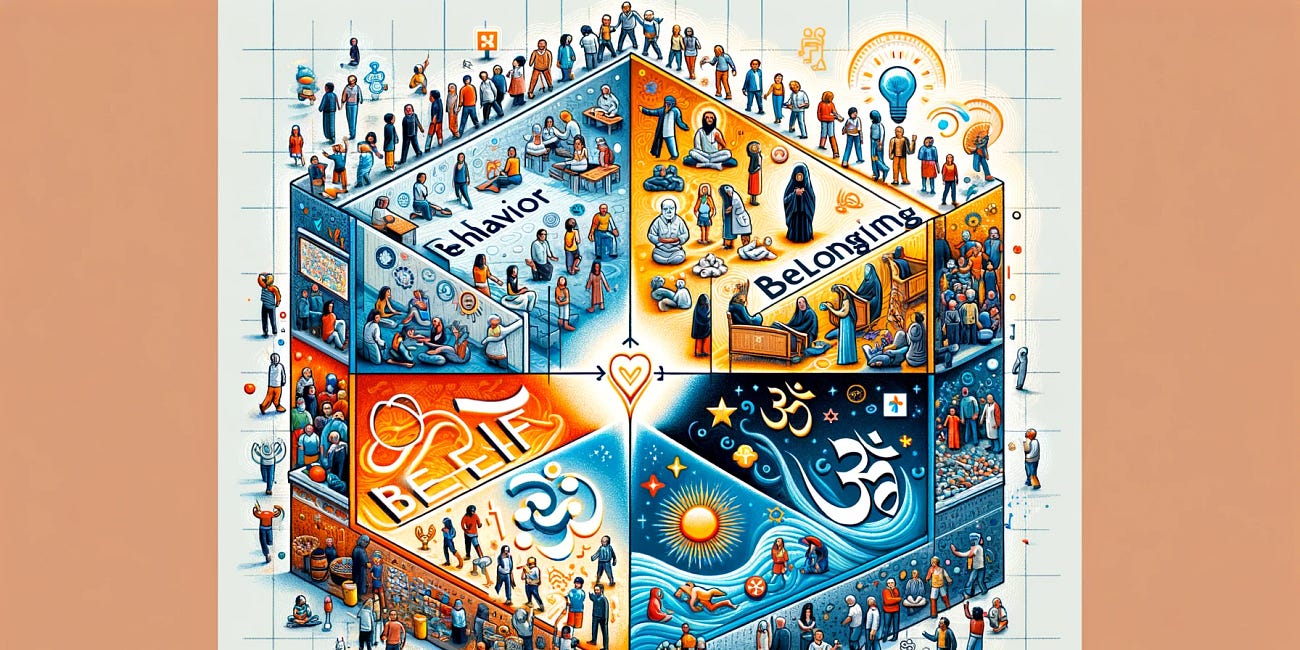
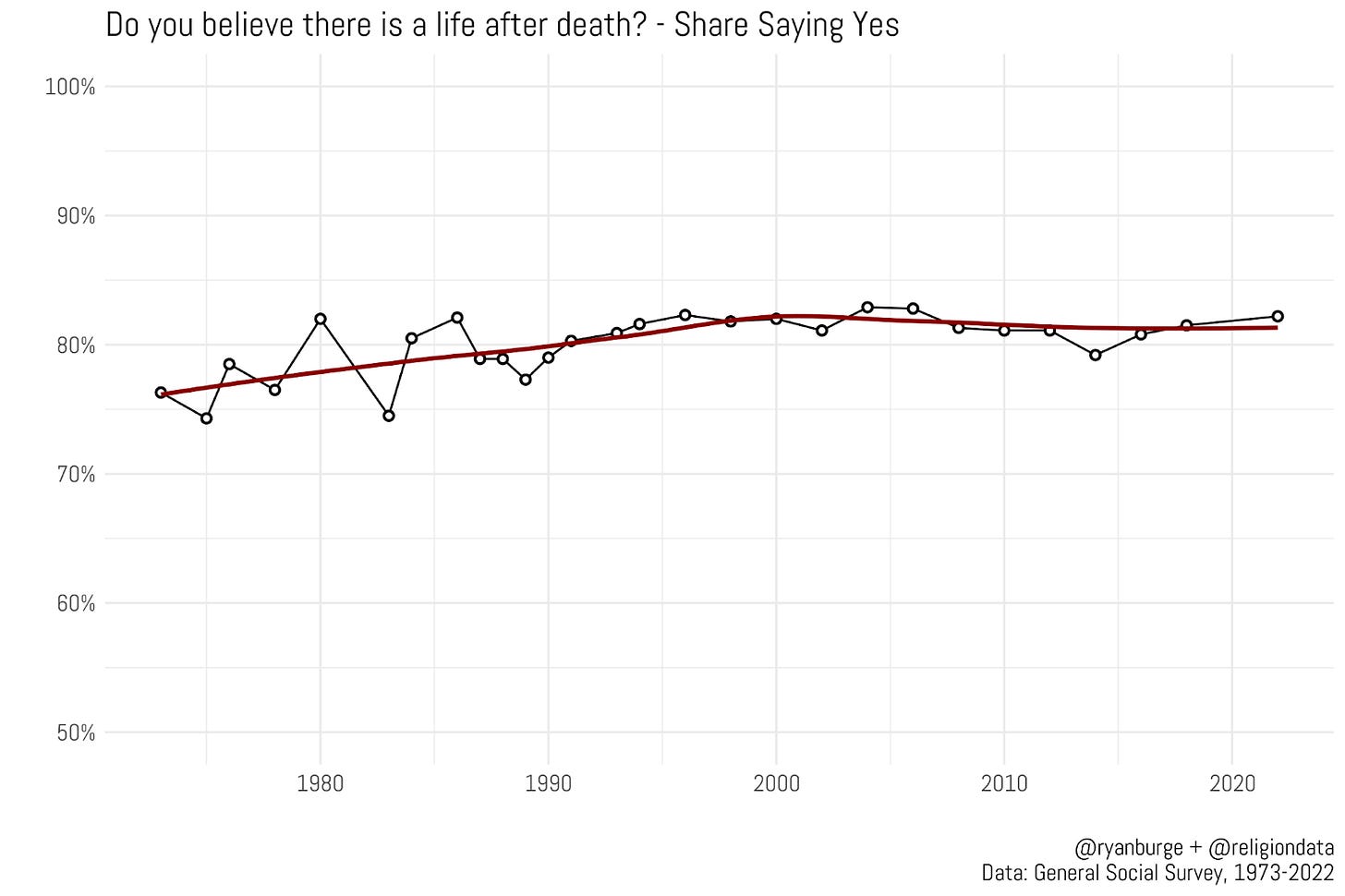

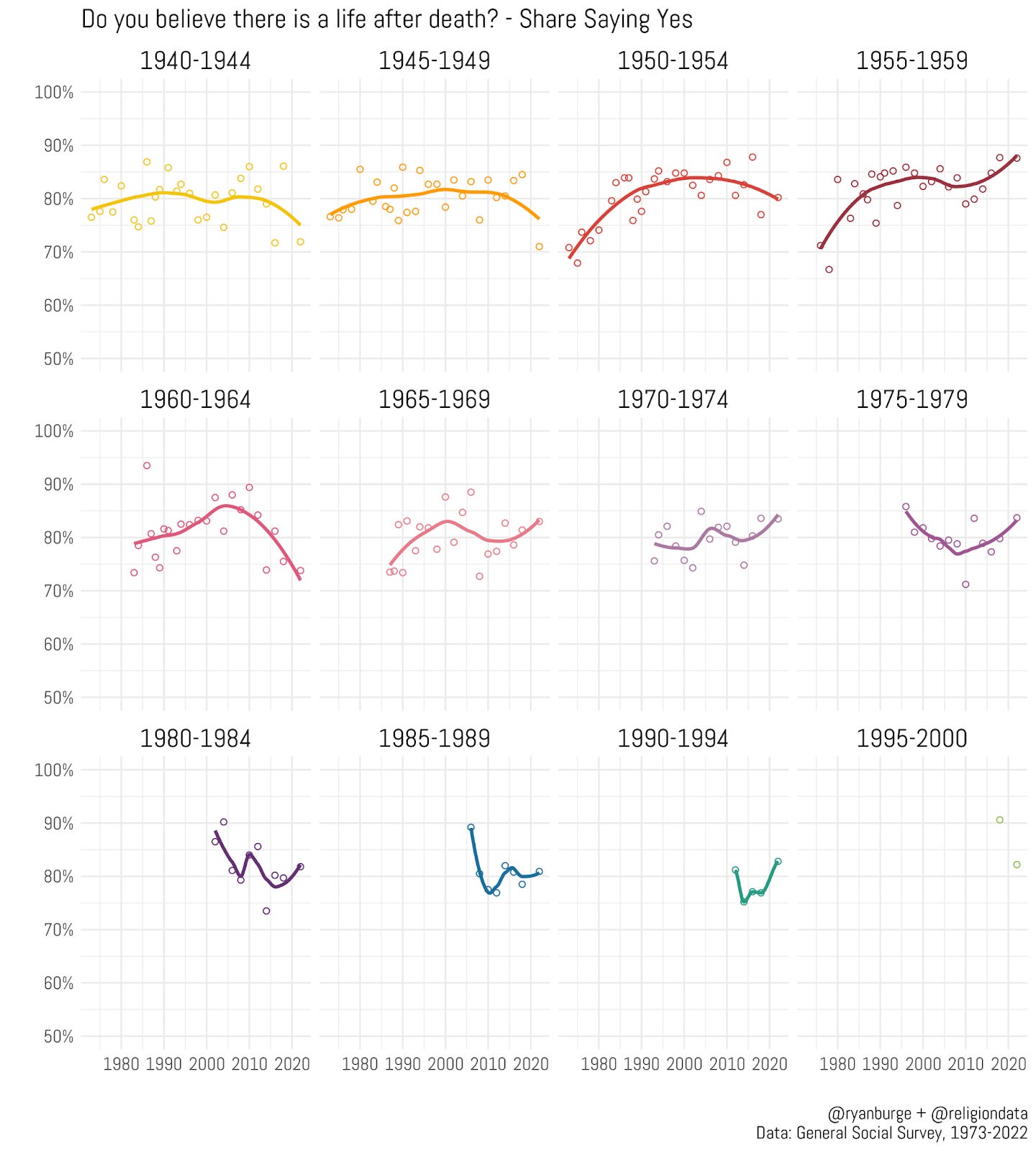
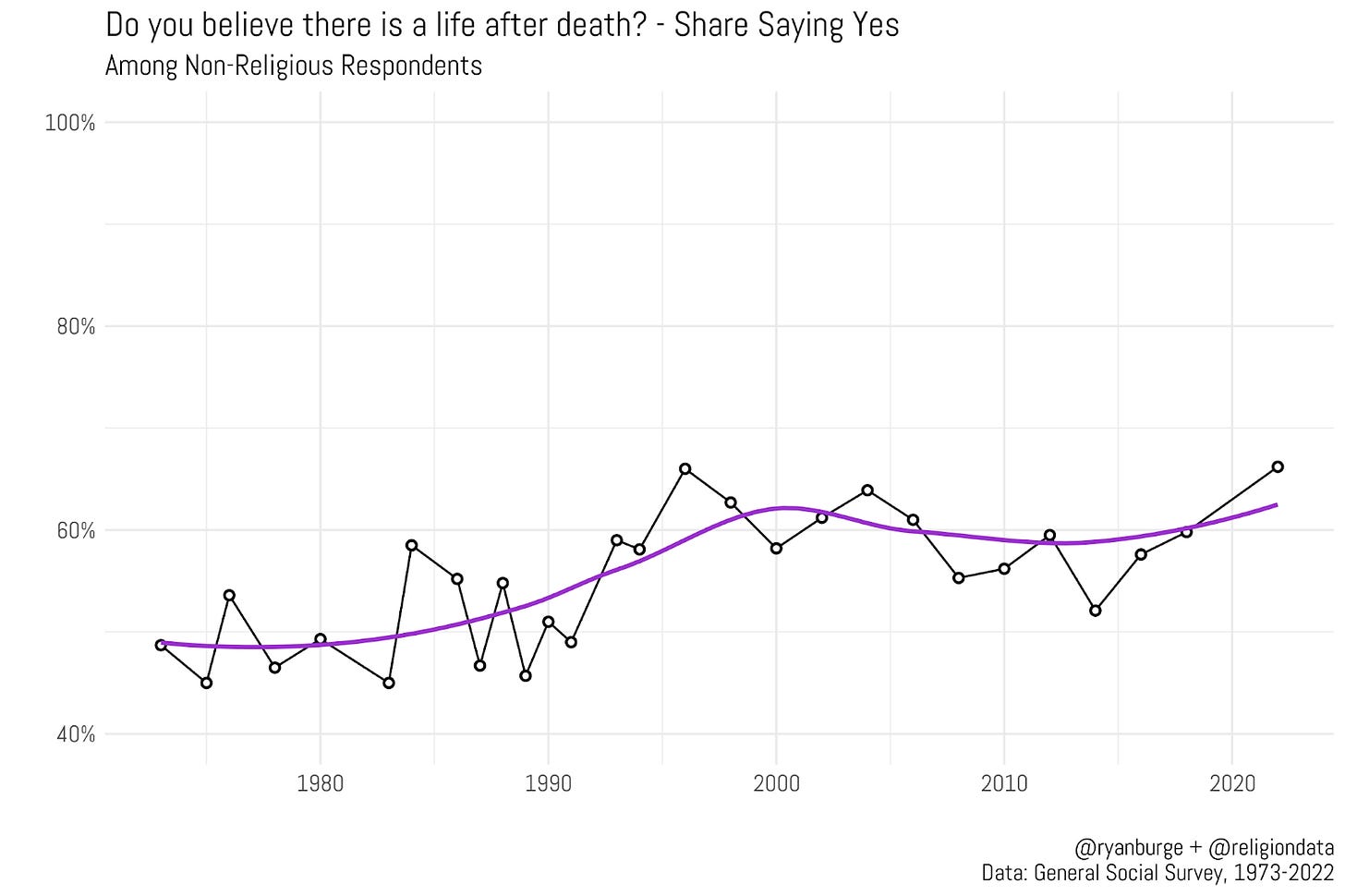
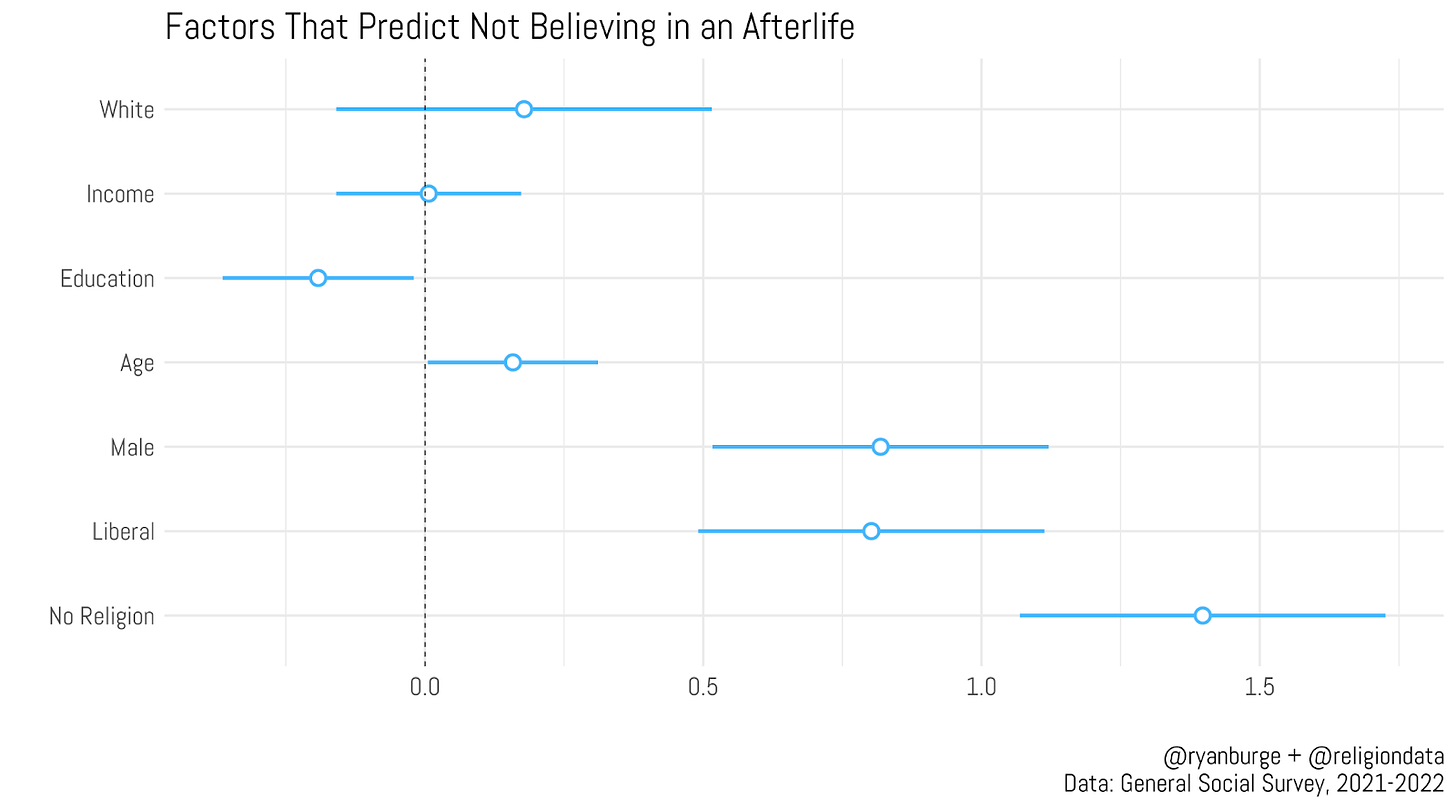
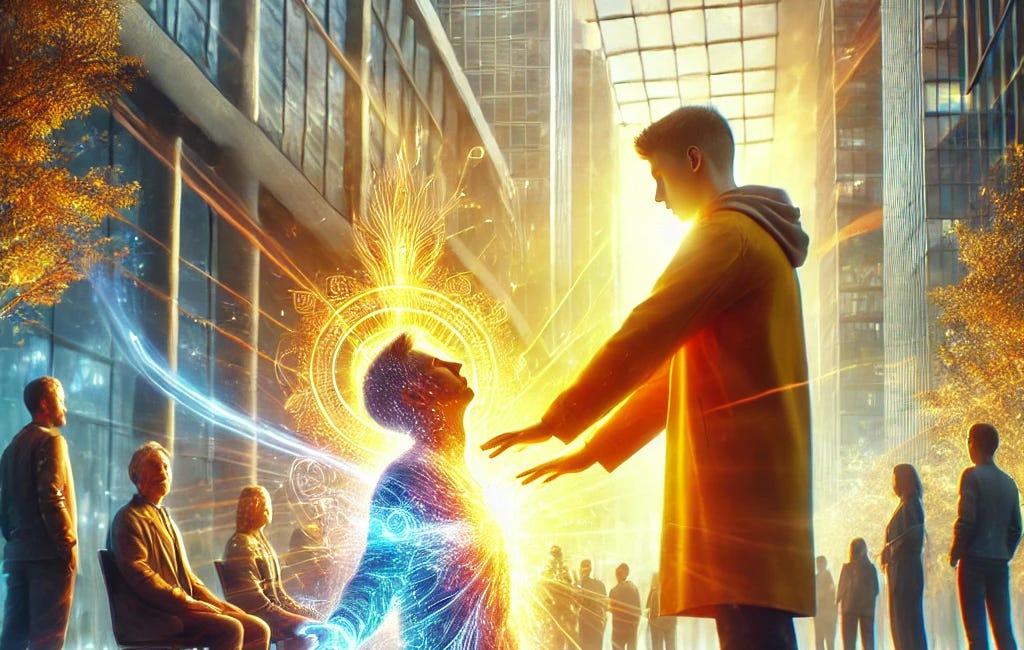
I regularly reflect on those people they studied who had the corpus callostomy (split brain) surgery and the questions they asked them. In particular the people who, when asked if they believed in God, said "yes" and wrote "no."
If your left brain can believe in God while your right brain doesn't (or vice versa) it doesn't surprise me that peoples' responses to questions of belief change based on the wording.
This incredibly stable 80% belief in the afterlife is pretty astounding to me, though. Perhaps there's something to Ecclesiastes 3:11: "God has also set eternity in [80% of] the human heart[s]."
27 years ago, I had a shared death experience with my grandfather. I’d never even heard of shared death experiences at that time. It was as real as anything I have ever experienced. So, yes, I believe in the afterlife and not on religious terms. There is actually a research group called shared crossings that are studying these things.